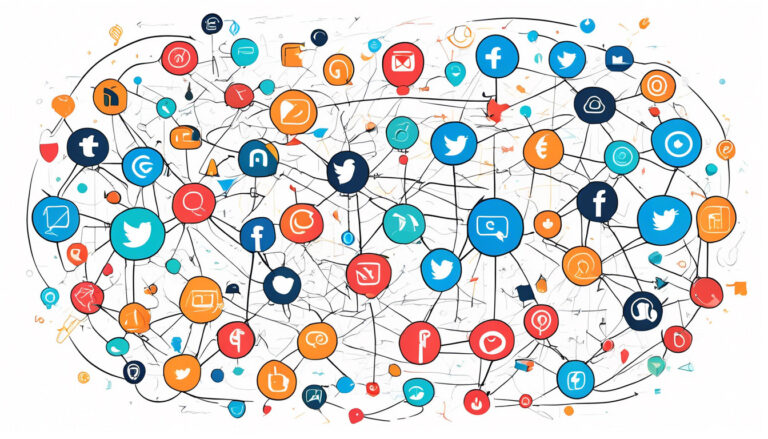In today’s digital age, social media’s taken center stage as a pivotal force in content distribution, revolutionizing the way information is shared and consumed.
Gone are the days when traditional media outlets held a monopoly over content dissemination. Now, platforms like Facebook, Twitter, Instagram, and LinkedIn empower individuals and businesses alike to reach global audiences with unprecedented speed and precision.
With algorithms that tailor content to user preferences, social media not only amplifies visibility but also fosters engagement and interaction, making it an indispensable tool for marketers, creators, and consumers.
This article delves into the multifaceted role of social media in shaping content distribution, exploring its benefits, challenges, and transformative impact on the digital landscape.
Importance of Social Media
Social media plays a crucial role in how content reaches and engages a wide audience. You can instantly share updates, videos, and articles with your followers, expanding your reach far beyond traditional methods.
It’s not just about posting; it’s about creating a community. By interacting with your audience through comments, likes, and shares, you build trust and loyalty.
These platforms also allow you to target specific demographics, ensuring your content reaches the right people.
Additionally, real-time analytics provide insights into what works and what doesn’t, helping you refine your approach.
With billions of active users, social media offers unparalleled opportunities for content creators and businesses to connect and grow.
Embrace its potential to amplify your message effectively.
Strategies for Content Distribution
Effective content distribution strategies are key to maximizing your reach and engagement on social media platforms.
Start by identifying your target audience. Understand their preferences and tailor your content to meet their needs.
Next, create a content calendar. Consistency is crucial, so schedule posts to maintain a regular presence.
Use a mix of content types, like videos, articles, and infographics, to keep your audience engaged.
Collaborate with influencers to widen your reach.
Additionally, leverage hashtags and keywords to improve discoverability.
Monitor your performance with analytics tools. Measure engagement, shares, and comments to understand what’s working and refine your strategy accordingly.
Finally, engage with your audience directly. Respond to comments and messages to build a loyal community around your content.
Social Media Platforms for Distribution
When distributing content, choosing the right social media platforms is crucial for reaching your target audience effectively. Each platform has unique features and demographics, so understanding where your audience spends their time is essential.
For instance, LinkedIn is ideal for B2B content, while Instagram and TikTok are perfect for visual and short-form content. Facebook offers wide reach with diverse age groups, and Twitter is great for real-time updates and engagement. Don’t forget YouTube for long-form video content and Pinterest for visually-driven inspiration.
By tailoring your content to fit the strengths of each platform, you’ll maximize engagement and visibility. Remember, it’s not about being everywhere but being where your audience is most active. Select wisely and focus your efforts accordingly.
Measuring Success and Analytics
Tracking the performance of your social media efforts is essential for understanding what works and refining your strategy.
Start by setting clear goals, like increasing engagement or driving website traffic.
Use analytics tools provided by platforms like Facebook Insights, Twitter Analytics, and Instagram Insights to monitor metrics such as reach, impressions, and click-through rates. Google Analytics can also help you track how social media traffic converts on your website.
Regularly examine these metrics to spot trends and adjust your content accordingly.
Don’t forget to utilize A/B testing to see which posts resonate more with your audience.
By consistently analyzing and tweaking your approach, you’ll maximize your social media’s effectiveness in content distribution and better achieve your objectives.
How can small businesses leverage social media for content distribution without a large budget?
You can maximize social media’s impact for content distribution on a budget by creating engaging posts, utilizing hashtags, collaborating with influencers, and engaging with your audience.
Consistent quality content and strategic planning are key.
What are some common pitfalls to avoid when distributing content on social media?
When distributing content on social media, avoid common pitfalls like overposting, neglecting engagement, ignoring analytics, and lacking consistency.
Stay mindful of your audience, monitor performance, and adjust strategies for better results.
How has the role of social media in content distribution evolved over the past decade?
Over the past decade, social media has transformed content distribution.
It has become a powerful tool for reaching wider audiences, fostering engagement, and enabling rapid sharing of information across various platforms.
Conclusion
In conclusion, social media plays a crucial role in distributing content effectively.
By utilizing various platforms and implementing strategic tactics, you can reach a wider audience and drive engagement.
Monitoring success through analytics helps refine your approach and optimize results.
Embrace the power of social media to enhance your content distribution efforts and maximize your impact in the digital landscape.





